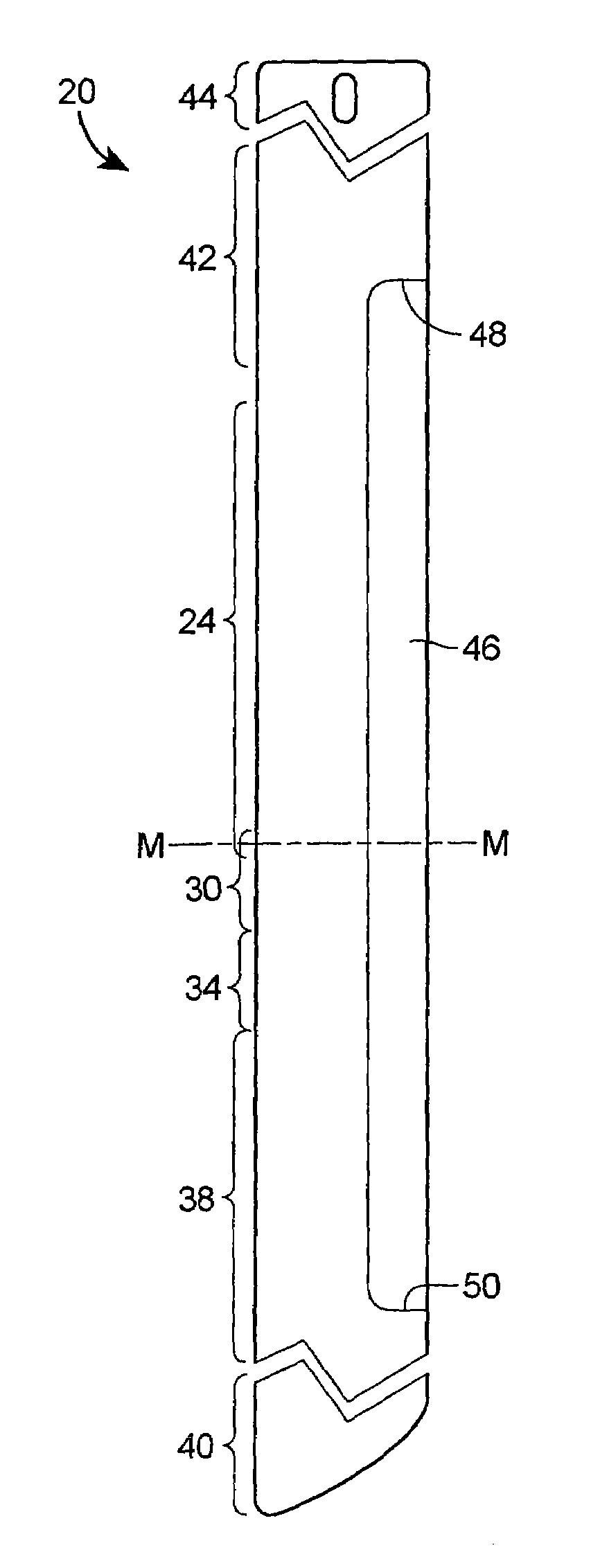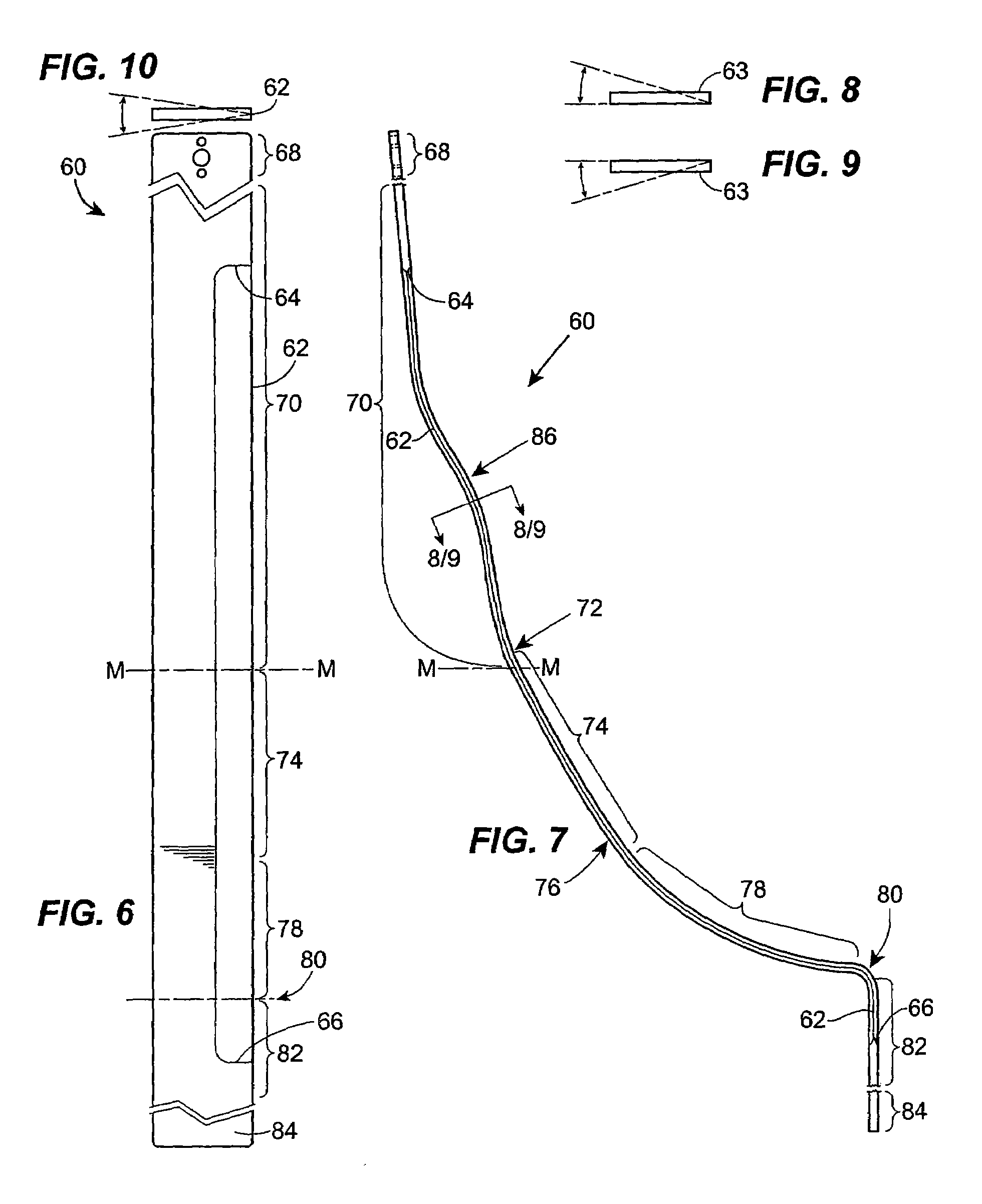Loin knife J-blades for use with automatic loin puller apparatus
a technology of automatic pulling and loin puller, which is applied in the field of blades, can solve the problems of increasing the use cycle of such blades, increasing the number of hand trimming operations downstream, and reducing the yield of belly, loin and fatback portions, so as to reduce the risk of premature breakage, increase yield, and prolong the useful life
- Summary
- Abstract
- Description
- Claims
- Application Information
AI Technical Summary
Benefits of technology
Problems solved by technology
Method used
Image
Examples
Embodiment Construction
[0038]The present disclosure relates to dual loin knife blades that provide improved processing operating efficiencies and yields over the prior forms of Z-blades and J-blades as disclosed in U.S. Pat. No. 6,547,658, and further overcomes many of the deficiencies found in the blades, and their shapes and manufacturing methods.
[0039]Having reference to the drawings, wherein like reference numerals indicate corresponding elements, there is shown in FIG. 1 an illustration of a Z-blade member, generally denoted by reference 20. Z-blade 20 includes (from top to bottom in that Figure): an upper mounting portion, generally denoted by region reference 22; an upper central blade portion 24; an angle bend forming a rib bone radius portion 26; a shelf portion 28 comprising an upper initial or finger shelf portion 30, a relatively short shallow-angled shelf bend portion 32, and a lower or loin eye avoidance shelf portion 34 (hereafter the “LAS portion”); an angle bend forming a belly cutoff rad...
PUM
 Login to View More
Login to View More Abstract
Description
Claims
Application Information
 Login to View More
Login to View More - R&D
- Intellectual Property
- Life Sciences
- Materials
- Tech Scout
- Unparalleled Data Quality
- Higher Quality Content
- 60% Fewer Hallucinations
Browse by: Latest US Patents, China's latest patents, Technical Efficacy Thesaurus, Application Domain, Technology Topic, Popular Technical Reports.
© 2025 PatSnap. All rights reserved.Legal|Privacy policy|Modern Slavery Act Transparency Statement|Sitemap|About US| Contact US: help@patsnap.com



